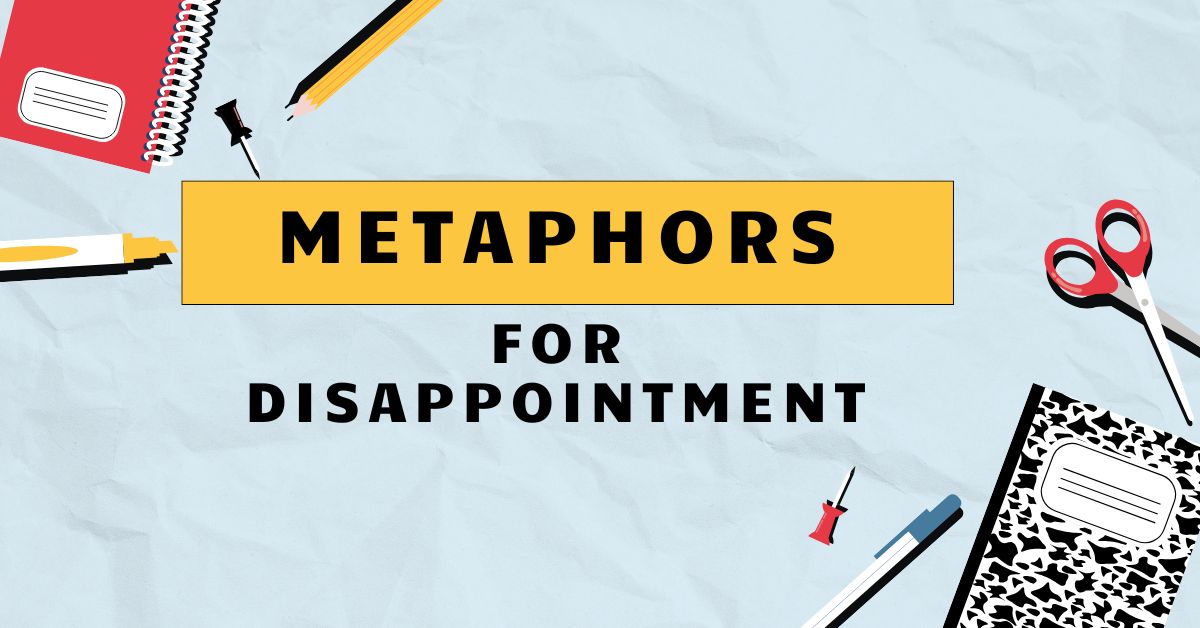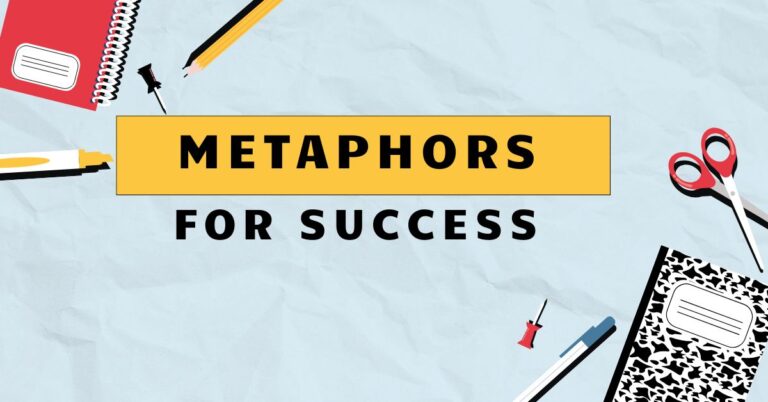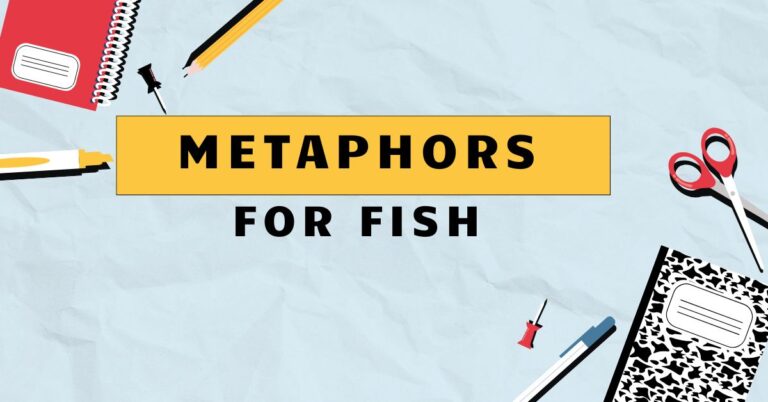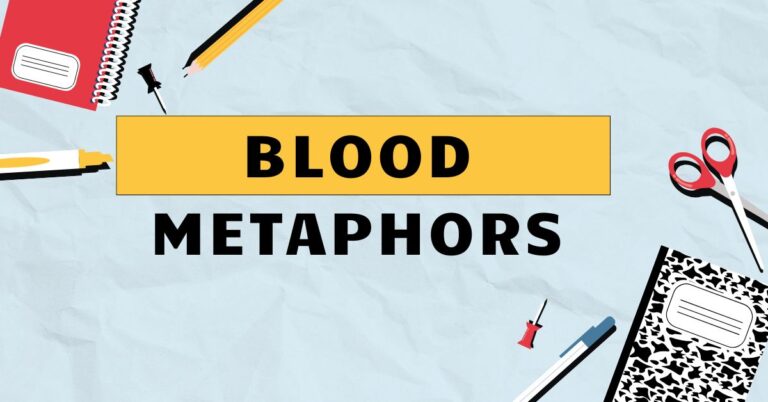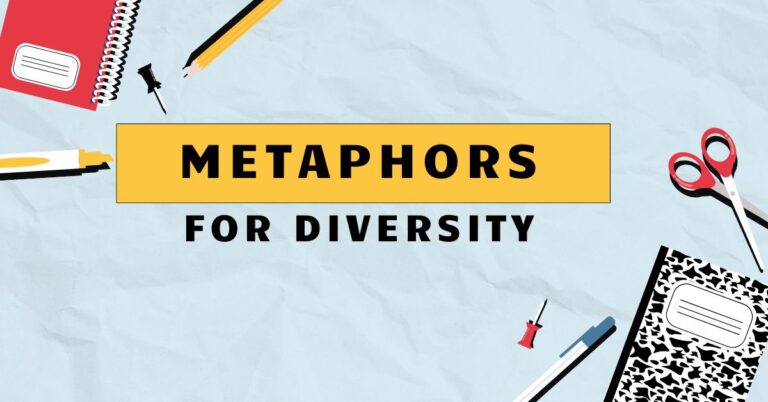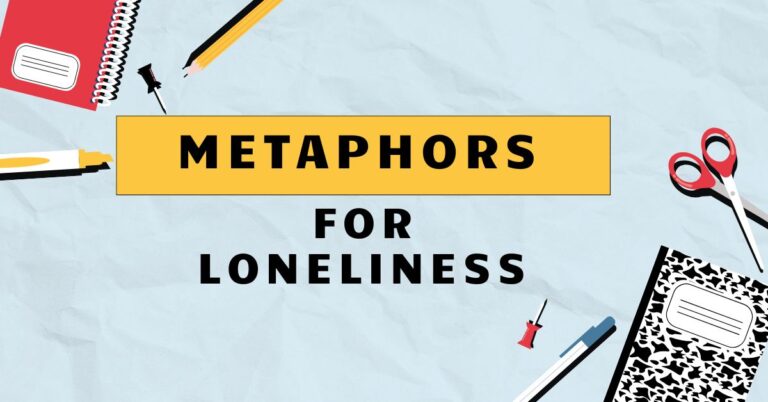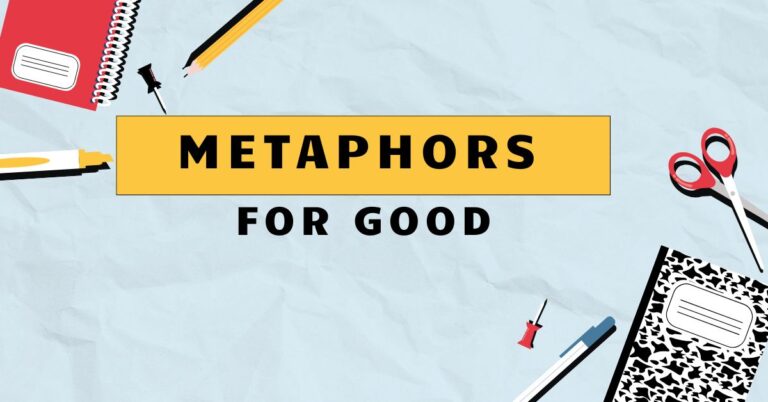35 Metaphors for Disappointment: A Comprehensive Guide
Disappointment is an inevitable part of life, and expressing it effectively can be challenging. Metaphors offer a powerful way to convey the depth and nuance of this emotion, transforming abstract feelings into relatable images.
This article explores the rich landscape of metaphors for disappointment, providing a comprehensive guide for English learners and enthusiasts. Understanding these metaphors can enhance your vocabulary, improve your communication skills, and allow you to express your feelings with greater precision and creativity.
This guide is designed for students, writers, and anyone looking to enrich their understanding and use of the English language.
Table of Contents
- Introduction
- Definition of Metaphor and Disappointment
- Structural Breakdown of Metaphors
- Types of Metaphors for Disappointment
- Examples of Metaphors for Disappointment
- Usage Rules for Metaphors
- Common Mistakes with Metaphors
- Practice Exercises
- Advanced Topics in Metaphorical Language
- Frequently Asked Questions
- Conclusion
Definition of Metaphor and Disappointment
Ametaphoris a figure of speech that directly compares two unrelated things, stating that one thing *is* another to suggest a likeness between them. Unlike similes, which use “like” or “as,” metaphors make an implicit comparison.
The power of a metaphor lies in its ability to create vivid imagery and deeper understanding by transferring qualities from one concept to another. It allows us to understand abstract concepts in more concrete terms.
Disappointment, on the other hand, is the feeling of sadness or frustration caused by the non-fulfillment of one’s hopes, expectations, or wishes. It’s a complex emotion that can range from mild dissatisfaction to profound grief.
Expressing disappointment effectively requires sensitivity and precision, and metaphors can be invaluable tools in conveying the specific nature and intensity of this feeling. Understanding disappointment is key to emotional intelligence and effective communication.
Classification of Metaphors
Metaphors can be classified in several ways, including:
- Standard Metaphors: These are common and widely understood (e.g., “time is money”).
- Novel Metaphors: These are original and creative, offering a fresh perspective (e.g., “disappointment tasted like ash”).
- Dead Metaphors: These are so overused that they’ve lost their metaphorical impact (e.g., “the heart of the matter”).
- Mixed Metaphors: These combine two or more inconsistent metaphors (e.g., “let’s nip it in the bud and iron out the wrinkles”).
Function of Metaphors
Metaphors serve several important functions in language:
- Explanation: They simplify complex ideas by relating them to familiar concepts.
- Emphasis: They add emotional impact and make language more vivid.
- Persuasion: They can influence an audience by framing an issue in a particular light.
- Aesthetics: They enhance the beauty and artistry of language.
Contexts for Using Metaphors of Disappointment
Metaphors for disappointment can be used in a variety of contexts:
- Literature: To deepen character development and create emotional resonance.
- Poetry: To express personal feelings and explore universal themes.
- Everyday Conversation: To communicate feelings in a relatable way.
- Business Communication: To soften criticism or express concerns constructively.
Structural Breakdown of Metaphors
Metaphors consist of two main elements: thetenorand thevehicle. The tenor is the subject being described (in this case, disappointment), and the vehicle is the object or concept used to describe it.
The connection between the tenor and vehicle is the shared characteristic or quality that makes the metaphor effective.
For example, in the metaphor “Disappointment was a cold wind,” the tenor is “disappointment” and the vehicle is “a cold wind.” The shared characteristic is the feeling of unpleasantness or discomfort that both evoke. The metaphor works because a cold wind is something tangible and relatable, making the abstract feeling of disappointment more understandable.
Understanding the structure of a metaphor allows you to analyze its effectiveness and create your own original metaphors. Consider the qualities of disappointment you want to convey (e.g., its intensity, its duration, its effect on you) and then choose a vehicle that shares those qualities.
The effectiveness of a metaphor also depends on the audience’s understanding of the vehicle. A metaphor that is clear and relatable to one person may be confusing to another.
Therefore, it’s important to consider your audience when choosing a metaphor.
Common Metaphorical Patterns
Certain patterns frequently appear in metaphors for disappointment. These include:
- Disappointment as a Physical Weight: This emphasizes the burden and heaviness of disappointment (e.g., “Disappointment weighed heavily on her shoulders”).
- Disappointment as a Wound: This highlights the pain and damage caused by disappointment (e.g., “His disappointment was a deep wound”).
- Disappointment as a Loss: This focuses on the sense of something being taken away (e.g., “Disappointment stole his joy”).
- Disappointment as a Weather Phenomenon: This uses weather imagery to convey the emotional climate of disappointment (e.g., “Disappointment was a dark cloud hanging over him”).
Types of Metaphors for Disappointment
Metaphors for disappointment can be categorized based on the type of imagery they employ. Understanding these categories can help you choose the most appropriate metaphor for a given situation.
Physical Sensations
These metaphors use physical sensations to describe disappointment, such as coldness, heaviness, or sharpness. They are effective because they tap into our shared physical experiences, making the emotion more relatable.
Examples include:
- “Disappointment was a punch to the gut.”
- “Disappointment tasted bitter.”
- “Disappointment felt like a cold hand on my heart.”
Nature and Environment
These metaphors use elements of nature, such as storms, deserts, or darkness, to represent disappointment. They can convey the intensity and scope of the emotion.
Examples include:
- “Disappointment was a barren wasteland.”
- “Disappointment was a storm raging inside her.”
- “Disappointment was a thick fog that clouded his mind.”
Objects and Artifacts
These metaphors use objects and artifacts, such as broken glass, locked doors, or empty containers, to symbolize disappointment. They often highlight the sense of loss or frustration associated with unmet expectations.
Examples include:
- “Disappointment was a shattered mirror.”
- “Disappointment was a locked door.”
- “Disappointment was an empty promise.”
Emotional States
These metaphors compare disappointment to other emotional states, such as sadness, grief, or despair. They can help to clarify the specific emotional tone of the disappointment.
Examples include:
- “Disappointment was a shadow of grief.”
- “Disappointment was a wave of sadness.”
- “Disappointment was a seed of despair.”
Examples of Metaphors for Disappointment
The following tables provide extensive examples of metaphors for disappointment, organized by category. These examples are designed to inspire you and help you understand how different types of metaphors can be used to express this complex emotion.
The table below contains metaphors that describe disappointment as a physical sensation. These metaphors often emphasize the immediate and visceral impact of disappointment.
| Metaphor | Explanation |
|---|---|
| Disappointment was a slap in the face. | Highlights the sudden and shocking nature of disappointment. |
| Disappointment tasted like ash. | Emphasizes the unpleasant and lingering aftertaste of disappointment. |
| Disappointment was a heavy weight on her chest. | Conveys the feeling of being burdened and suffocated by disappointment. |
| Disappointment felt like a cold shower. | Suggests a sudden and unwelcome shock. |
| Disappointment was a dull ache in his heart. | Implies a persistent and nagging sense of sadness. |
| Disappointment was a sharp sting. | Highlights the immediate and painful impact. |
| Disappointment felt like a punch to the gut. | Emphasizes the visceral and debilitating effect. |
| Disappointment was a knot in her stomach. | Conveys the feeling of anxiety and unease. |
| Disappointment tasted like bile. | Suggests a strong feeling of disgust and revulsion. |
| Disappointment felt like a thousand needles pricking her skin. | Emphasizes the intense and pervasive nature of the feeling. |
| Disappointment was a crushing blow. | Highlights the devastating impact of the feeling. |
| Disappointment felt like icy water running down his spine. | Conveys a sense of shock and discomfort. |
| Disappointment was a bitter pill to swallow. | Suggests something unpleasant that must be accepted. |
| Disappointment felt like walking through treacle. | Emphasizes the feeling of being stuck and unable to move forward. |
| Disappointment was a burning sensation in her throat. | Conveys a feeling of frustration and suppressed emotion. |
| Disappointment was a cold hand on my heart. | Highlights the chilling and isolating effect. |
| Disappointment felt like sandpaper on his soul. | Emphasizes the grating and irritating nature of the feeling. |
| Disappointment was a suffocating blanket. | Conveys the feeling of being overwhelmed and unable to breathe. |
| Disappointment felt like a lead weight dragging him down. | Highlights the feeling of being burdened and unable to progress. |
| Disappointment was a sour taste in her mouth. | Emphasizes the unpleasant and lingering feeling. |
| Disappointment felt like a swarm of bees stinging him. | Conveys the intense and overwhelming nature of the feeling. |
| Disappointment was a jarring thud. | Highlights the abrupt and unsettling nature of the feeling. |
| Disappointment felt like a vise tightening around his chest. | Emphasizes the feeling of pressure and restriction. |
| Disappointment was a prickly sensation. | Conveys a feeling of discomfort and irritation. |
| Disappointment felt like a stone in her shoe. | Highlights the persistent and annoying nature of the feeling. |
The following table contains metaphors that describe disappointment using imagery from nature and the environment. These metaphors often emphasize the vastness or destructive power of disappointment.
| Metaphor | Explanation |
|---|---|
| Disappointment was a dark cloud hanging over him. | Suggests a sense of impending doom and sadness. |
| Disappointment was a barren wasteland. | Emphasizes the feeling of emptiness and lack of hope. |
| Disappointment was a storm raging inside her. | Conveys the intense and turbulent emotions. |
| Disappointment was a drought in his soul. | Highlights the feeling of being deprived and unfulfilled. |
| Disappointment was a thick fog that clouded his mind. | Suggests a sense of confusion and disorientation. |
| Disappointment was a parched desert. | Emphasizes the feeling of being exhausted and depleted. |
| Disappointment was a flood of tears. | Conveys the overwhelming nature of sadness. |
| Disappointment was a cold winter. | Suggests a period of hardship and emotional stagnation. |
| Disappointment was a thorny bush. | Emphasizes the painful and difficult nature of the experience. |
| Disappointment was a landslide of hopes. | Highlights the sudden and catastrophic collapse of expectations. |
| Disappointment was a solar eclipse. | Suggests a temporary but significant loss of light and hope. |
| Disappointment was a forest fire consuming his dreams. | Conveys the destructive power of disappointment. |
| Disappointment was an iceberg in the sea of his emotions. | Highlights the hidden and potentially dangerous nature of the feeling. |
| Disappointment was a lunar eclipse. | Suggests a gradual dimming of hope and optimism. |
| Disappointment was a whirlwind of confusion. | Conveys the disorienting and chaotic nature of the feeling. |
| Disappointment was a barren field. | Highlights the lack of productivity and growth. |
| Disappointment was a frozen lake. | Suggests emotional coldness and stagnation. |
| Disappointment was a dense jungle. | Emphasizes the feeling of being lost and overwhelmed. |
| Disappointment was a rocky path. | Conveys the difficulty and challenge of overcoming the feeling. |
| Disappointment was a starless night. | Highlights the absence of hope and guidance. |
| Disappointment was a silent earthquake. | Suggests a devastating impact that is not immediately apparent. |
| Disappointment was a withered flower. | Emphasizes the loss of beauty and vitality. |
| Disappointment was a fallen tree. | Conveys the feeling of being uprooted and destabilized. |
| Disappointment was a dried-up riverbed. | Highlights the feeling of being empty and depleted. |
| Disappointment was a dormant volcano. | Suggests a suppressed anger and frustration that may erupt later. |
The table below contains metaphors that describe disappointment using objects and artifacts. These metaphors often emphasize the sense of loss, frustration, or brokenness associated with disappointment.
| Metaphor | Explanation |
|---|---|
| Disappointment was a shattered mirror. | Suggests a broken image of oneself or one’s expectations. |
| Disappointment was a locked door. | Emphasizes the feeling of being blocked or prevented from achieving one’s goals. |
| Disappointment was an empty promise. | Highlights the feeling of being betrayed or let down. |
| Disappointment was a broken toy. | Conveys a sense of lost innocence and joy. |
| Disappointment was a deflated balloon. | Suggests a loss of excitement and enthusiasm. |
| Disappointment was a torn photograph. | Emphasizes the feeling of being separated from something cherished. |
| Disappointment was a cracked vase. | Suggests a fragile hope that has been damaged. |
| Disappointment was a rusty key. | Emphasizes the feeling of being unable to unlock opportunities. |
| Disappointment was a broken record. | Conveys a sense of being stuck in a repetitive and unpleasant situation. |
| Disappointment was a tarnished trophy. | Suggests a loss of pride and achievement. |
| Disappointment was a blank canvas. | Emphasizes the lack of progress or fulfillment. |
| Disappointment was a silenced trumpet. | Conveys the suppression of joy and celebration. |
| Disappointment was a cobwebbed attic. | Suggests a forgotten or neglected potential. |
| Disappointment was a flickering candle. | Emphasizes the diminishing hope and optimism. |
| Disappointment was a broken compass. | Conveys the feeling of being lost and without direction. |
| Disappointment was a broken clock. | Highlights the feeling of time standing still or being wasted. |
| Disappointment was a dented shield. | Suggests a vulnerability and a loss of protection. |
| Disappointment was a faded letter. | Emphasizes the fading memories and hopes. |
| Disappointment was a jammed zipper. | Conveys the feeling of being stuck and unable to move forward. |
| Disappointment was a leaky bucket. | Highlights the constant loss and depletion of resources. |
| Disappointment was a tangled thread. | Suggests confusion and difficulty in untangling the situation. |
| Disappointment was a wilted bouquet. | Emphasizes the loss of beauty and freshness. |
| Disappointment was a chipped teacup. | Conveys the feeling of imperfection and damage. |
| Disappointment was a broken promise. | Highlights the feeling of betrayal and unfulfilled expectations. |
| Disappointment was a discarded map. | Suggests a loss of direction and purpose. |
Usage Rules for Metaphors
Using metaphors effectively requires careful consideration of several rules:
- Clarity: The metaphor should be understandable to the audience. Avoid obscure or overly complex metaphors.
- Relevance: The vehicle should be relevant to the tenor and share meaningful characteristics.
- Consistency: Avoid mixing metaphors, as this can create confusion and undermine the impact of your writing.
- Originality: Strive for originality in your metaphors to make your writing more engaging and memorable.
- Context: Consider the context in which you are using the metaphor and ensure that it is appropriate for the situation.
For example, saying “His dreams were a concrete jungle” doesn’t work because dreams are typically associated with freedom and aspiration, whereas a concrete jungle implies confinement and harshness. A more effective metaphor might be “His dreams were a fragile butterfly,” which conveys the delicate and easily crushed nature of dreams.
Exceptions to the Rules
While the above rules are generally helpful, there are exceptions. Sometimes, a deliberately mixed or unconventional metaphor can be effective if it is used intentionally and serves a specific purpose, such as creating a surreal or humorous effect.
Special Cases
Extended Metaphors: These are metaphors that are developed over several lines or paragraphs, creating a more complex and nuanced comparison. They can be particularly effective in literature and poetry.
Implied Metaphors: These are metaphors that do not explicitly state the comparison but imply it through suggestive language.
Common Mistakes with Metaphors
Several common mistakes can detract from the effectiveness of metaphors:
- Clichés: Using overused metaphors that have lost their impact (e.g., “heart of gold”).
- Mixed Metaphors: Combining inconsistent metaphors (e.g., “Let’s grab the bull by the horns and swim upstream”).
- Inappropriate Metaphors: Using metaphors that are not appropriate for the context or audience.
- Overly Complex Metaphors: Using metaphors that are too difficult to understand.
Here’s a table illustrating some common mistakes and their corrections:
| Incorrect | Correct | Explanation |
|---|---|---|
| He was a fish out of water in the desert. | He was a fish out of water at the formal dinner. | The original metaphor is nonsensical because fish cannot be in a desert. |
| Let’s nip it in the bud and iron out the wrinkles. | Let’s nip it in the bud. OR Let’s iron out the wrinkles. | This is a mixed metaphor combining two unrelated idioms. |
| Her heart was a gold mine. | Her heart was a wellspring of kindness. | “Gold mine” is a cliché; “wellspring of kindness” is more original. |
| Disappointment was a quantum entanglement. | Disappointment was a heavy cloak. | “Quantum entanglement” is too complex for general understanding. |
| The project was a rollercoaster from start to finish, but we sailed through it. | The project was a rollercoaster from start to finish. | The mixed metaphors create a confusing image. |
Practice Exercises
Test your understanding of metaphors for disappointment with the following exercises.
Exercise 1: Identify the Metaphor
Identify the metaphor in each sentence and explain its meaning.
- Disappointment was a brick wall in her path.
- His hopes were a house of cards.
- Disappointment was the thief of joy.
- Her dreams were a deflated tire.
- Disappointment was a bitter frost.
- The news was a dagger to his heart.
- Disappointment was a black hole.
- Her ambition was a broken wing.
- The rejection was a punch in the gut.
- Disappointment was a shadow over his future.
Answer Key:
- Metaphor: brick wall. Meaning: Obstacle preventing progress.
- Metaphor: house of cards. Meaning: Fragile and easily destroyed.
- Metaphor: thief of joy. Meaning: Takes away happiness.
- Metaphor: deflated tire. Meaning: Loss of momentum and energy.
- Metaphor: bitter frost. Meaning: Harsh and unwelcome experience.
- Metaphor: dagger to his heart. Meaning: Deep emotional pain.
- Metaphor: black hole. Meaning: Consuming and inescapable.
- Metaphor: broken wing. Meaning: Impaired ability to achieve goals.
- Metaphor: punch in the gut. Meaning: Sudden and painful shock.
- Metaphor: shadow over his future. Meaning: Uncertainty and negativity looming ahead.
Exercise 2: Complete the Metaphor
Complete each sentence with an appropriate metaphor for disappointment.
- Disappointment was like __________.
- His dreams turned into __________.
- The rejection felt like __________.
- Her hopes were __________.
- Disappointment tasted like __________.
- The news hit him like __________.
- His efforts were __________.
- Her spirit was __________.
- The setback felt like __________.
- Disappointment was a __________.
Suggested Answer Key:
- Disappointment was like a cold rain on a summer day.
- His dreams turned into dust in the wind.
- The rejection felt like a slap in the face.
- Her hopes were fragile seedlings.
- Disappointment tasted like unsweetened lemon.
- The news hit him like a runaway train.
- His efforts were a drop in the ocean.
- Her spirit was a flickering flame.
- The setback felt like a mountain to climb.
- Disappointment was a thick shroud.
Exercise 3: Create Your Own Metaphor
Write five sentences, each using a unique and original metaphor to describe disappointment.
Example:
Disappointment was a silent film, playing out the same tragic scene over and over.
Exercise 4: Metaphor Identification in Context
Read the following paragraph and identify at least three metaphors used to describe disappointment. Explain what each metaphor conveys about the speaker’s feelings.
“The project’s failure was more than just a setback; it was a chasm that swallowed my confidence whole. Disappointment was the bitter medicine I had to force down, each swallow making my stomach churn.
My aspirations, once vibrant banners waving in the wind, were now tattered rags, hanging limply from a broken mast. The weight of the failure pressed down on me, a suffocating blanket threatening to smother any remaining spark of hope.”
Answer Key:
- “a chasm that swallowed my confidence whole” – Conveys the depth and completeness of the loss of confidence.
- “bitter medicine I had to force down” – Emphasizes the unpleasant and unavoidable nature of dealing with disappointment.
- “tattered rags, hanging limply from a broken mast” – Highlights the ruined and lifeless state of the speaker’s aspirations.
- “a suffocating blanket threatening to smother any remaining spark of hope.” – Illustrates the overwhelming and oppressive burden of disappointment.
Advanced Topics in Metaphorical Language
For advanced learners, exploring the theoretical underpinnings of metaphor can be enriching. Consider researching:
- Conceptual Metaphor Theory: This theory, developed by George Lakoff and Mark Johnson, argues that metaphors are not just linguistic devices but fundamental cognitive structures that shape our understanding of the world.
- Cognitive Linguistics: This field explores the relationship between language and thought, including how metaphors reflect and influence our cognitive processes.
- Literary Theory: Exploring how metaphors are analyzed and interpreted in literary criticism can provide deeper insights into their artistic and cultural significance.
Further exploration could involve analyzing the use of metaphors in different genres of literature, comparing metaphorical expressions across different languages, or investigating the role of metaphors in shaping political discourse.
Frequently Asked Questions
- What is the difference between a metaphor and a simile?
A metaphor directly equates two things (e.g., “time is money”), while a simile uses “like” or “as” to make a comparison (e.g., “time is like money”). Similes are generally more explicit and less forceful than metaphors. - How can I create more original metaphors?
Start by identifying the key characteristics of the concept you want to describe. Then, brainstorm objects or concepts that share those characteristics, focusing on less obvious or conventional comparisons. Consider your personal experiences and observations for unique perspectives. - What is a dead metaphor?
A dead metaphor is a metaphor that has become so common that it has lost its metaphorical impact and is now used as a literal expression (e.g., “the head of the table”). - What is a mixed metaphor, and why should I avoid it?
A mixed metaphor combines two or more inconsistent metaphors, creating a confusing or nonsensical image (e.g., “Let’s grab the bull by the horns and swim upstream”). It should be avoided because it undermines the clarity and effectiveness of your writing. - Are metaphors only used in literature?
No, metaphors are used in all forms of communication, from everyday conversation to business presentations. They are a fundamental part of how we understand and express ideas. - How can I improve my understanding of metaphors?
Read widely and pay attention to how metaphors are used in different contexts. Analyze the metaphors you encounter, identifying the tenor, vehicle, and shared characteristics. Practice creating your own metaphors and seek feedback from others. - Is it possible to overuse metaphors?
Yes, overuse of metaphors can make your writing seem contrived or overwrought. Use metaphors sparingly and only when they add value to your communication. - How do cultural differences affect the interpretation of metaphors?
Metaphors are often culturally specific, and their interpretation can vary across different cultures. Be mindful of your audience and choose metaphors that are likely to be understood and appreciated by them. - Can a metaphor be too complex?
Yes, a metaphor can be too complex if it is difficult for the audience to understand. The goal of a metaphor is to clarify and enhance understanding, not to confuse or obscure meaning. - What role do metaphors play in persuasion?
Metaphors can be powerful tools of persuasion by framing an issue in a particular light and influencing the audience’s perception. They can evoke emotions and create a sense of shared understanding, making your message more persuasive.
Conclusion
Mastering the art of using metaphors for disappointment allows for more nuanced and impactful communication. By understanding the structure, types, and usage rules of metaphors, you can effectively convey the depth and complexity of this emotion.
Remember to prioritize clarity, relevance, and originality in your metaphors, and avoid common mistakes such as clichés and mixed metaphors. Practice creating your own metaphors and analyzing those used by others to further enhance your skills.
With dedication and attention to detail, you can harness the power of metaphorical language to express yourself with greater precision and creativity.
The key takeaway is that metaphors are not just decorative elements of language; they are powerful tools for understanding and communicating complex emotions. By expanding your repertoire of metaphors for disappointment, you can enrich your vocabulary and express your feelings with greater depth and resonance.
Embrace the challenge of creating original metaphors and continue to explore the vast and fascinating world of figurative language.

